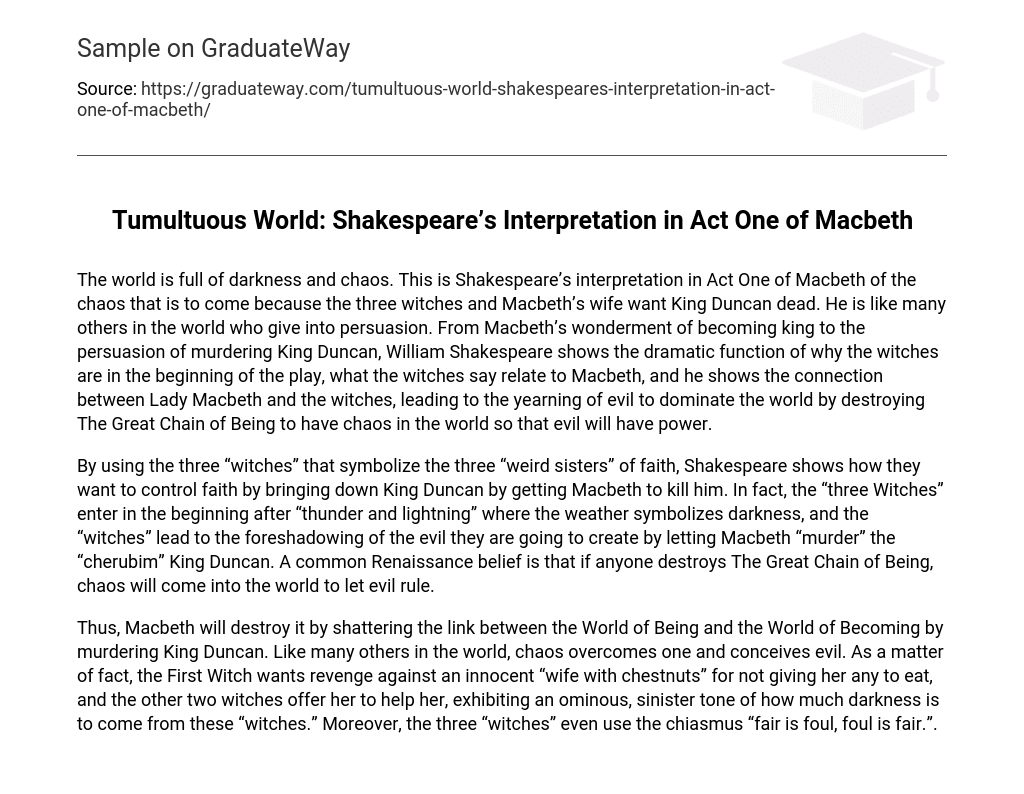The world is full of darkness and chaos. This is Shakespeare’s interpretation in Act One of Macbeth of the chaos that is to come because the three witches and Macbeth’s wife want King Duncan dead. He is like many others in the world who give into persuasion. From Macbeth’s wonderment of becoming king to the persuasion of murdering King Duncan, William Shakespeare shows the dramatic function of why the witches are in the beginning of the play, what the witches say relate to Macbeth, and he shows the connection between Lady Macbeth and the witches, leading to the yearning of evil to dominate the world by destroying The Great Chain of Being to have chaos in the world so that evil will have power.
By using the three “witches” that symbolize the three “weird sisters” of faith, Shakespeare shows how they want to control faith by bringing down King Duncan by getting Macbeth to kill him. In fact, the “three Witches” enter in the beginning after “thunder and lightning” where the weather symbolizes darkness, and the “witches” lead to the foreshadowing of the evil they are going to create by letting Macbeth “murder” the “cherubim” King Duncan. A common Renaissance belief is that if anyone destroys The Great Chain of Being, chaos will come into the world to let evil rule.
Thus, Macbeth will destroy it by shattering the link between the World of Being and the World of Becoming by murdering King Duncan. Like many others in the world, chaos overcomes one and conceives evil. As a matter of fact, the First Witch wants revenge against an innocent “wife with chestnuts” for not giving her any to eat, and the other two witches offer her to help her, exhibiting an ominous, sinister tone of how much darkness is to come from these “witches.” Moreover, the three “witches” even use the chiasmus “fair is foul, foul is fair.”.





